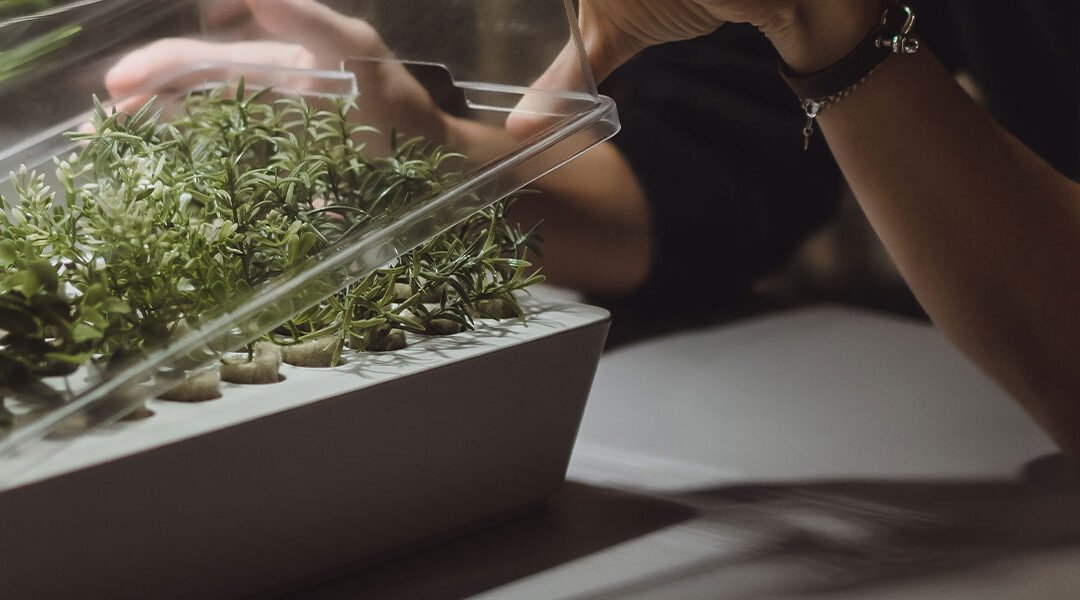Hydroponic farming is revolutionizing the way we grow food, allowing individuals to cultivate fresh produce in limited spaces with minimal resources. Whether you live in a small apartment or have a backyard, starting a small hydroponic farm at home is a cost-effective and sustainable way to grow your own vegetables, herbs, and fruits. This guide will walk you through the essential steps to set up a hydroponic system with minimal investment.

What is Hydroponic Farming?
Hydroponic farming is a method of growing plants without soil, using a nutrient-rich water solution instead. This technique offers several benefits:
- Faster plant growth compared to soil-based farming
- Reduced water consumption (up to 90% less than traditional farming)
- No need for pesticides or herbicides
- Ability to grow food year-round in controlled conditions
Hydroponics is a fundamental part of indoor farming, allowing individuals to produce fresh food efficiently regardless of outdoor conditions.
Choosing the Right Hydroponic System

Before you start, it’s crucial to choose a hydroponic system that suits your budget and space. Here are some affordable options:
1. Kratky Method (Passive Hydroponics)
- No need for electricity or pumps
- Ideal for leafy greens like lettuce and spinach
- Requires only a container, nutrient solution, and net pots
2. Deep Water Culture (DWC)
- Involves suspending plant roots in oxygenated nutrient solution
- Low-cost and suitable for beginners
- Best for growing lettuce, basil, and kale
3. Wick System
- One of the simplest hydroponic methods
- Uses wicks to transfer nutrients from a reservoir to the plant roots
- Perfect for herbs and small plants
4. Nutrient Film Technique (NFT)
- Continuous flow of nutrient solution over plant roots
- Requires a small pump but is still budget-friendly
- Great for strawberries, lettuce, and herbs
These are some of the best hydroponic systems for growing various crops at home.
Essential Equipment and Costs
 Start a Small Hydroponic Farm
Start a Small Hydroponic Farm
Starting a small hydroponic farm at home doesn’t have to be expensive. Here’s a list of affordable equipment you’ll need:
| Item | Estimated Cost (USD) |
|---|---|
| Containers (Tubs/Buckets) | $5 – $20 |
| Net Pots | $5 – $15 |
| Growing Medium (Coconut Coir, Rockwool) | $10 – $30 |
| Nutrient Solution | $15 – $40 |
| LED Grow Lights (Optional) | $25 – $100 |
| Air Pump (for DWC) | $10 – $30 |
Setting Up Your Hydroponic System
Follow these steps to start a small hydroponic farm successfully:
Step 1: Select Your Location
- Choose a space with adequate light (near a window or use LED grow lights)
- Ensure proper ventilation to prevent mold growth
Step 2: Prepare the Containers
- Use plastic bins, buckets, or recycled containers
- Drill holes for net pots if needed
Step 3: Choose and Prepare the Growing Medium
- Coconut coir, Rockwool, or perlite are cost-effective options
- Place the medium in net pots to support plant roots
Step 4: Mix the Nutrient Solution
- Follow manufacturer instructions for correct dilution
- Ensure pH levels are between 5.5 – 6.5 for optimal plant growth
Step 5: Plant the Seeds
- Start with easy-to-grow crops like lettuce, basil, or mint
- Germinate seeds in a damp paper towel before transferring
Step 6: Maintain Your System
- Check water levels daily
- Adjust nutrients and pH weekly
- Provide sufficient light (12-16 hours a day)
Best Plants for Beginner Hydroponic Farming
If you’re new to hydroponics, start with these easy-to-grow plants:
- Leafy Greens: Lettuce, Spinach, Kale
- Herbs: Basil, Mint, Cilantro
- Vegetables: Cherry Tomatoes, Peppers
Cafe Farming and Its Benefits
Cafe farming is an innovative approach where cafes integrate hydroponic systems to grow fresh herbs and vegetables on-site. This allows businesses to offer farm-to-table freshness, reduce costs, and engage customers with a sustainable food sourcing model. The benefits of cafe farming include:
- Fresh, high-quality ingredients for food and beverages
- Reduced dependency on external suppliers
- Eco-friendly branding and sustainability initiatives
Common Mistakes to Avoid
- Overfeeding Nutrients: Excess nutrients can harm plant roots
- Poor Light Exposure: Insufficient light leads to slow growth
- Ignoring pH Levels: Regular monitoring prevents nutrient lockout
Conclusion
Starting a small hydroponic farm at home is an affordable and rewarding venture. By choosing the right system, using budget-friendly materials, and maintaining proper care, you can enjoy fresh, homegrown produce all year round. With a little effort, your indoor farming setup will thrive and provide sustainable food options.
Frequently Asked Questions (FAQ)
1. How much does it cost to start a hydroponic farm at home?
It can cost as little as $50 to $200, depending on the system and materials used.
2. Do hydroponic plants need sunlight?
Yes, or you can use LED grow lights for indoor setups.
3. How often should I change the nutrient solution?
Typically every 1-2 weeks to ensure proper nutrient balance.
4. Can I use tap water for hydroponics?
Yes, but it should be dechlorinated and have a balanced pH.
5. Is hydroponic farming better than soil farming?
It depends on your needs. Hydroponics offers faster growth, uses less water, and requires less space, making it ideal for small-scale indoor farming.

